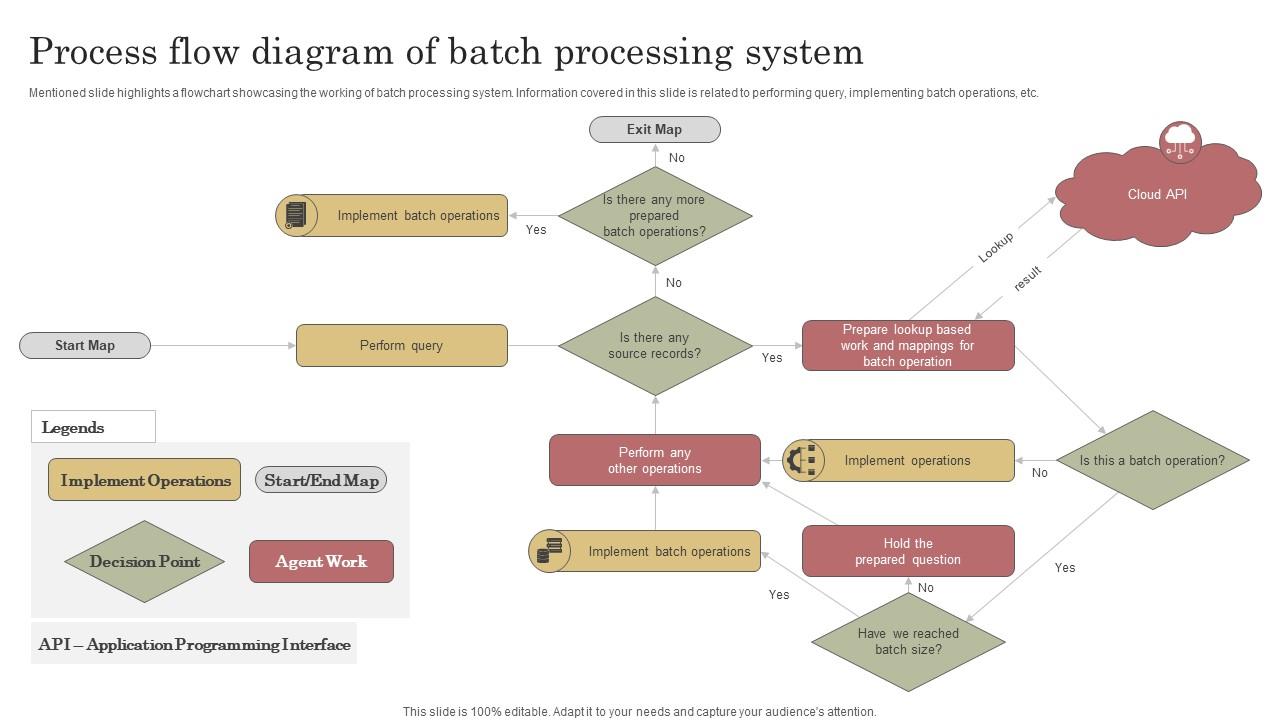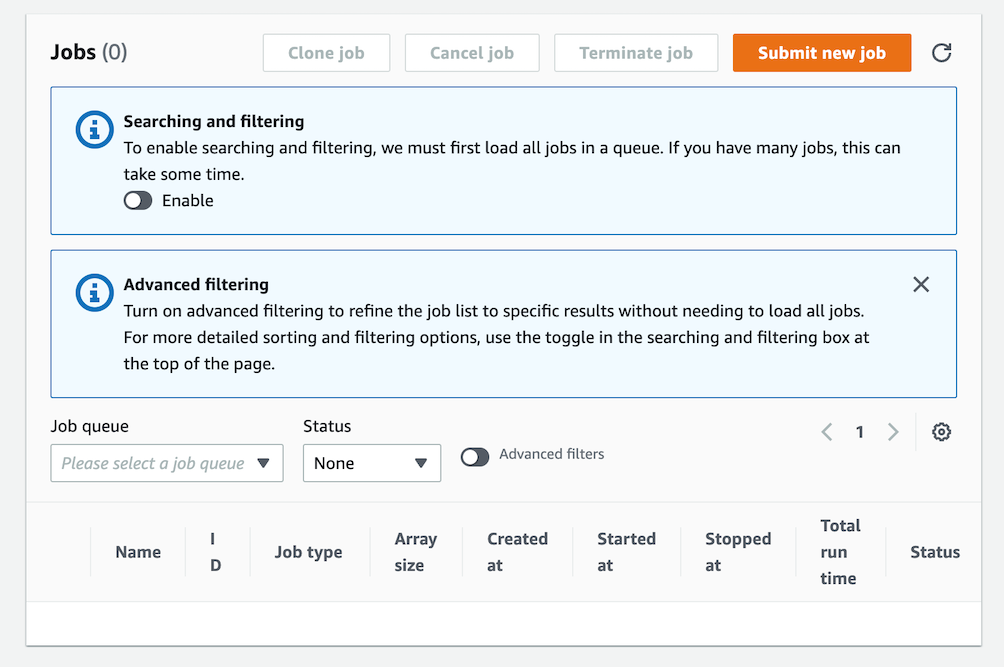RemoteIoT technology has become a game-changer in the field of data processing, offering robust solutions for batch jobs. Batch processing is an essential aspect of handling large datasets efficiently, and RemoteIoT provides a powerful framework for executing these tasks. If you're looking to leverage RemoteIoT for your batch processing needs, this article will serve as your ultimate guide.
As more businesses move toward remote and automated data processing, understanding how RemoteIoT works becomes increasingly important. Whether you're a developer, system administrator, or IT professional, mastering RemoteIoT batch job examples can significantly enhance your productivity and streamline operations.
In this article, we'll delve into the intricacies of RemoteIoT batch job examples, providing practical insights and actionable tips. By the end, you'll have a clear understanding of how to implement RemoteIoT batch processing effectively and efficiently.
Table of Contents
- Introduction to RemoteIoT Batch Job
- Understanding the Basics of Batch Processing
- Setting Up RemoteIoT for Batch Processing
- RemoteIoT Batch Job Example
- Benefits of Using RemoteIoT for Batch Jobs
- Optimizing RemoteIoT Batch Jobs
- Troubleshooting Common Issues
- Best Practices for RemoteIoT Batch Processing
- Integrating RemoteIoT with Other Systems
- Future Trends in RemoteIoT Batch Processing
Introduction to RemoteIoT Batch Job
RemoteIoT batch job processing is a critical component of modern data management systems. It allows businesses to handle large volumes of data efficiently, ensuring that operations run smoothly without manual intervention. The concept of batch processing involves executing a series of tasks automatically, which is especially useful for repetitive and time-consuming jobs.
RemoteIoT offers a comprehensive platform for managing batch jobs. Its flexibility and scalability make it an ideal choice for organizations of all sizes. By leveraging RemoteIoT, businesses can reduce costs, improve accuracy, and enhance overall efficiency in their data processing workflows.
Whether you're processing financial transactions, analyzing sensor data, or handling customer information, RemoteIoT provides the tools and resources needed to execute batch jobs seamlessly. In the following sections, we'll explore the specifics of RemoteIoT batch processing and how it can benefit your organization.
Understanding the Basics of Batch Processing
Batch processing is a method of handling multiple tasks in a sequential manner without requiring real-time interaction. This approach is particularly useful when dealing with large datasets that require significant computational resources. By grouping similar tasks together, batch processing optimizes resource utilization and minimizes downtime.
Key Features of Batch Processing
- Automatic execution of tasks
- Reduced manual intervention
- Improved resource allocation
- Enhanced data accuracy
In the context of RemoteIoT, batch processing involves configuring jobs to run at specific intervals or under certain conditions. This ensures that data is processed efficiently and consistently, meeting the needs of modern businesses.
Setting Up RemoteIoT for Batch Processing
Before you can start using RemoteIoT for batch processing, you'll need to set up the necessary infrastructure. This includes installing the RemoteIoT platform, configuring system settings, and defining job parameters. Below are the steps to get started:
Step 1: Install RemoteIoT Platform
Begin by downloading and installing the RemoteIoT software on your server or local machine. Ensure that your system meets the minimum requirements for optimal performance.
Step 2: Configure System Settings
Once the installation is complete, configure the system settings to align with your organization's requirements. This includes setting up user permissions, defining data storage locations, and establishing communication protocols.
Step 3: Define Job Parameters
Specify the parameters for your batch jobs, such as input data sources, processing rules, and output destinations. This step is crucial for ensuring that your jobs execute as intended.
RemoteIoT Batch Job Example
To better understand how RemoteIoT works for batch processing, let's walk through a practical example. Suppose you're managing a fleet of IoT devices that generate sensor data. You want to process this data periodically to identify trends and anomalies.
Step 1: Define the Data Source
Start by specifying the source of your sensor data. This could be a database, file system, or cloud storage location. Ensure that the data is accessible by the RemoteIoT platform.
Step 2: Configure the Processing Rules
Set up the rules for processing the data. For instance, you might want to calculate averages, detect outliers, or generate reports. Use RemoteIoT's built-in tools to define these rules.
Step 3: Schedule the Job
Finally, schedule the batch job to run at regular intervals. This ensures that your data is processed consistently and efficiently, without requiring manual intervention.
Benefits of Using RemoteIoT for Batch Jobs
RemoteIoT offers several advantages for batch processing, making it an attractive option for businesses. Below are some of the key benefits:
- Scalability: RemoteIoT can handle large volumes of data, scaling seamlessly to meet your organization's needs.
- Flexibility: The platform supports a wide range of data formats and processing rules, ensuring compatibility with various systems.
- Automation: Batch jobs can be scheduled to run automatically, reducing the need for manual intervention.
- Security: RemoteIoT provides robust security features to protect sensitive data during processing.
By leveraging these benefits, organizations can achieve greater efficiency and productivity in their data processing workflows.
Optimizing RemoteIoT Batch Jobs
To get the most out of RemoteIoT batch processing, it's important to optimize your jobs for performance. Below are some tips to help you achieve this:
Tip 1: Use Efficient Data Structures
Choose the right data structures for your processing needs. For example, using arrays instead of lists can improve performance when handling large datasets.
Tip 2: Minimize Resource Usage
Optimize your jobs to minimize resource usage, such as CPU and memory. This can be achieved by refining processing rules and reducing unnecessary computations.
Tip 3: Monitor Job Performance
Regularly monitor the performance of your batch jobs to identify bottlenecks and areas for improvement. Use RemoteIoT's analytics tools to gain insights into job execution and resource utilization.
Troubleshooting Common Issues
Despite its robustness, RemoteIoT batch processing can sometimes encounter issues. Below are some common problems and their solutions:
Issue 1: Job Execution Failures
If a batch job fails to execute, check the job parameters and ensure that all required resources are available. Additionally, review the error logs for more detailed information.
Issue 2: Performance Degradation
If you notice a decline in performance, consider optimizing your data structures and processing rules. You may also need to upgrade your hardware or cloud resources to handle increased workloads.
Issue 3: Security Concerns
To address security concerns, ensure that all data is encrypted during transmission and storage. Regularly update your system to protect against vulnerabilities and threats.
Best Practices for RemoteIoT Batch Processing
Implementing best practices can help you maximize the effectiveness of RemoteIoT batch processing. Below are some recommendations:
- Plan your batch jobs carefully, considering factors such as data volume, processing time, and resource availability.
- Document your job configurations and parameters for future reference and troubleshooting.
- Test your jobs thoroughly before deploying them in a production environment.
- Regularly review and update your processing rules to reflect changing business needs.
By following these best practices, you can ensure that your RemoteIoT batch processing operations run smoothly and efficiently.
Integrating RemoteIoT with Other Systems
RemoteIoT can be integrated with various systems to enhance its functionality. For example, you can connect it with cloud platforms, databases, and third-party applications to create a comprehensive data processing ecosystem.
Integration with Cloud Platforms
RemoteIoT supports integration with popular cloud platforms such as Amazon Web Services (AWS), Microsoft Azure, and Google Cloud Platform (GCP). This allows you to leverage cloud resources for enhanced scalability and flexibility.
Integration with Databases
Connect RemoteIoT with relational and NoSQL databases to facilitate seamless data exchange. This integration enables you to store and retrieve data efficiently, supporting complex batch processing tasks.
Integration with Third-Party Applications
Use RemoteIoT's APIs to integrate with third-party applications, expanding its capabilities beyond batch processing. This can include tools for data visualization, reporting, and analytics.
Future Trends in RemoteIoT Batch Processing
As technology continues to evolve, RemoteIoT batch processing is likely to incorporate new features and capabilities. Below are some trends to watch for:
- Artificial Intelligence: AI-driven algorithms will enhance batch processing by automating complex tasks and improving decision-making.
- Edge Computing: Processing data at the edge of the network will reduce latency and improve real-time processing capabilities.
- Blockchain Integration: Incorporating blockchain technology will enhance data security and transparency in batch processing operations.
By staying informed about these trends, businesses can position themselves to take full advantage of RemoteIoT's future advancements.
Conclusion
RemoteIoT batch job processing offers a powerful solution for managing large datasets efficiently. By understanding the basics, setting up the platform correctly, and optimizing your jobs, you can achieve significant improvements in productivity and efficiency.
We encourage you to explore the possibilities of RemoteIoT batch processing further and implement the best practices outlined in this article. Don't forget to share your thoughts and experiences in the comments section below. For more insights on RemoteIoT and related technologies, check out our other articles on the website.



Detail Author:
- Name : Hilda Hettinger
- Username : cglover
- Email : muriel03@hotmail.com
- Birthdate : 1971-10-23
- Address : 77844 Jaclyn Spur Apt. 881 Breitenbergbury, VA 75409-1090
- Phone : 1-612-746-4052
- Company : Upton-Ruecker
- Job : User Experience Manager
- Bio : Expedita animi dolores qui sit voluptas inventore. Quam aut ut deleniti porro iste esse consequatur laudantium. Voluptatem quo consectetur amet voluptatem a et.
Socials
instagram:
- url : https://instagram.com/kiehnr
- username : kiehnr
- bio : Rerum mollitia qui libero. Quia voluptas corporis voluptas aut.
- followers : 5568
- following : 2838
twitter:
- url : https://twitter.com/rafael.kiehn
- username : rafael.kiehn
- bio : Sequi ut et a rerum similique quia. Odit quasi consequatur aut recusandae. Et voluptatum voluptas quam.
- followers : 6661
- following : 2126